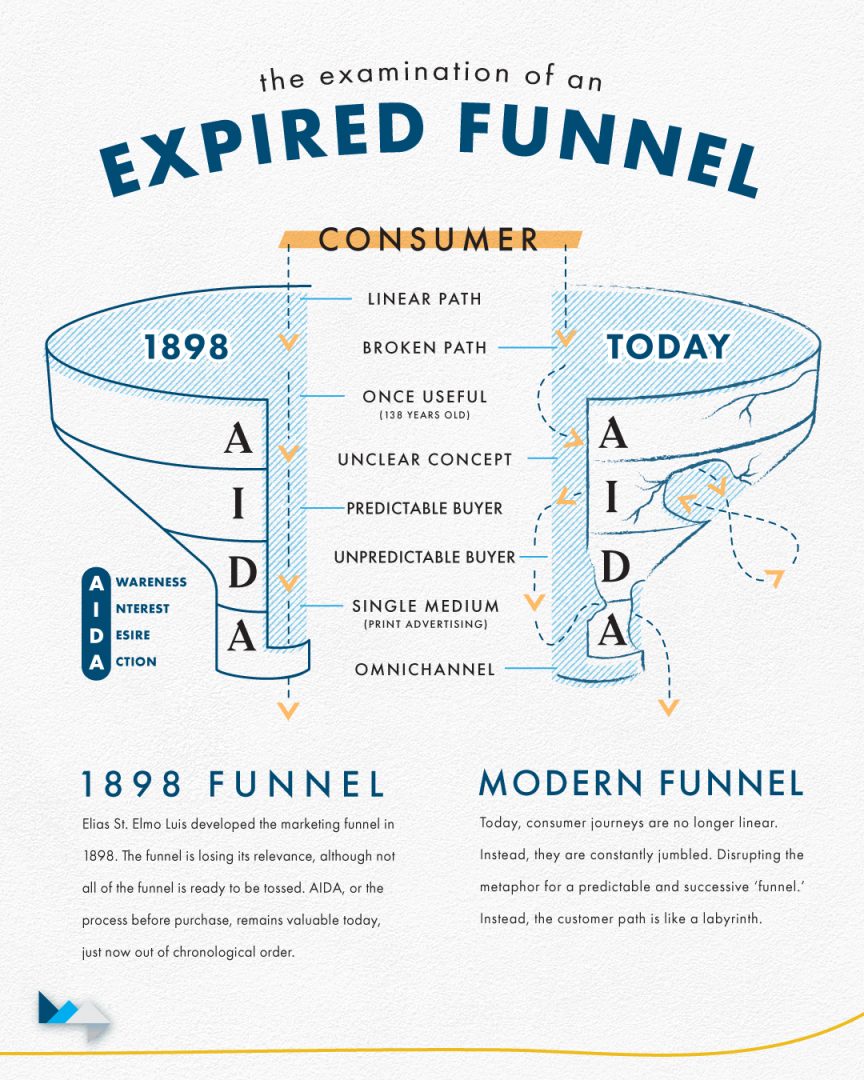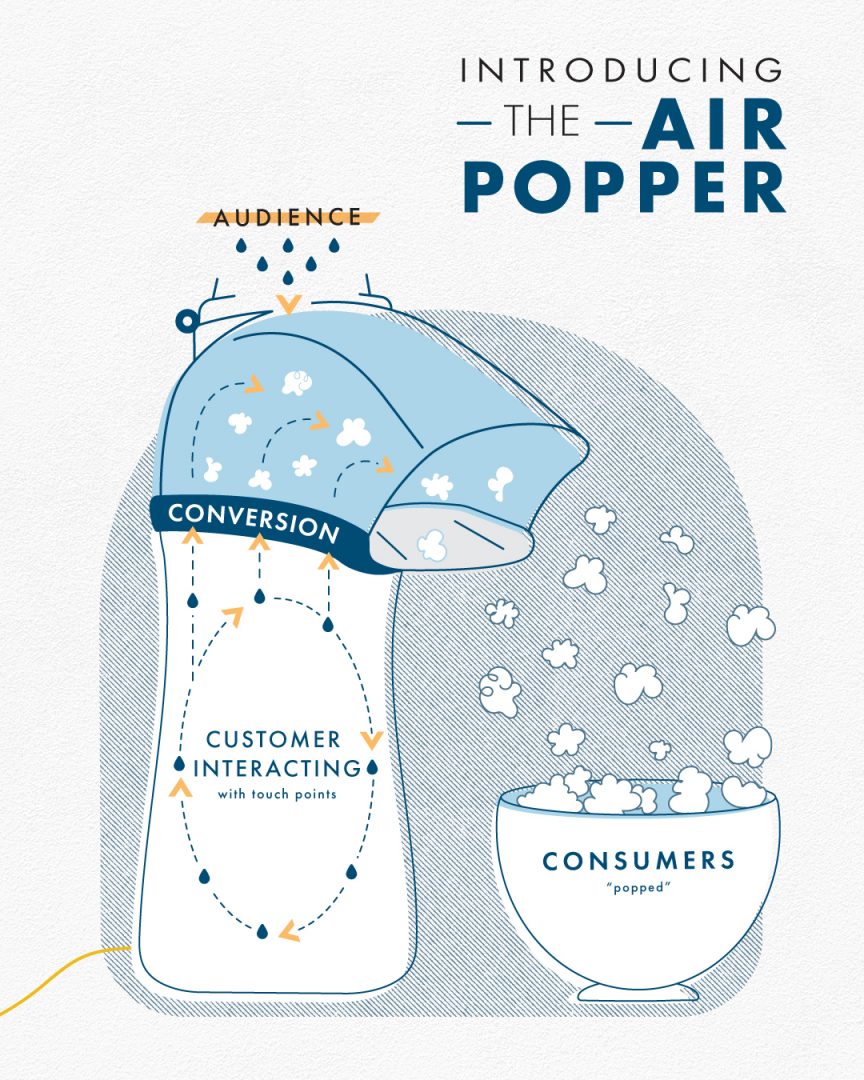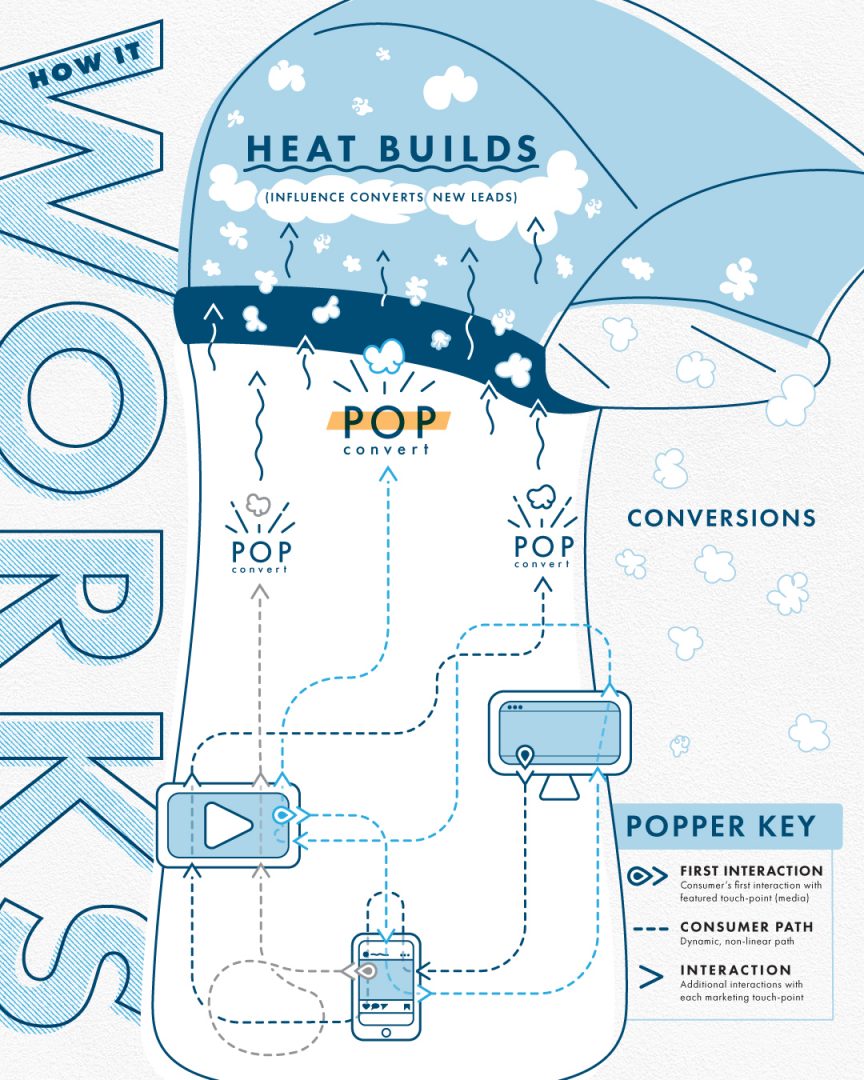History and Breakdown of the Marketing Funnel
In the world of marketing, the term ‘marketing funnel’ has just about run its course. While the marketing funnel might feel like a modern concept, it’s actually a very dated idea.
In 1898, Elias St. Elmo Luis, an American advertising advocate, developed the AIDA Funnel Model. The AIDA model represented the chronological path consumers traversed — Awareness, Interest, Desire, and Action.
As you can imagine, the advertising landscape during that period was vastly different than it is today and existed largely in just one medium – print. The change that the world has undergone since then has shuffled the purchasing process and challenged the idea that customer journeys are linear, as the funnel suggests they are.

Reasons to Drop the Funnel
Today, we live in a multi-faceted world with an incredible number of advertising and purchasing platforms. Technology has disrupted the traditional marketing funnel, and we believe it is time to give the funnel the boot. We must have a new way to visualize this so-called funnel, as it has become something else entirely. Marketing deserves a concept that doesn’t exclude those that bounced early, came back later, waited indefinitely to purchase, or purchased immediately without ever entering the funnel.
Informed Buyers Accelerating Change
Once a straightforward path, now a labyrinth. Buyers today are more informed and empowered in their purchasing choices, often making them less predictable. Understanding the customer journey through a new lens could be especially helpful in determining the appropriate tools for navigating the ever-changing marketing landscape. So, we would like to offer our marketing funnel alternative.

Leaving the Marketing Funnel in the Past
Enter the air popper. Remember those? No? Well, ask the closest Gen-X’er you can find because they have probably used one. First released in 1978, air poppers use hot air to move kernels around in a circular motion until they become hot enough to pop. As popped kernels begin to collect at the top, they trap more heat below, popping more kernels, and pushing more corn out of the popper.
Jumbled Consumer Journey Defines the Airpopper
This is how we like to think of the modern-day customer journey. Consumers no longer move in a single direction through your sales cycle. Instead, they jump around in an unpredictable manner, interacting with your business via multiple touchpoints across a myriad of channels. Eventually, your audience members will begin to convert due to a certain interaction, message, ad, or piece of content that they came across somewhere inside your popper. As your audience members do begin to convert (pop), they turn into the popped kernels at the top of your air popper, trapping more heat below (influence), leading to even more popped kernels (conversions).

Finally, an Accurate Metaphor for Modern Processes
In the modern world of eCommerce and digital advertising, no two consumer paths are alike. Instead of forcing modern marketing techniques into 100+year-old categories, air popper marketing accepts the new unpredictable buying journey. Consumers move in and out of a lot of poppers (marketing funnels) as they scroll through social media, listen to podcasts, and watch TV. Assuming that you are creating content your audience wants in the first place, your kernels will eventually begin to pop. But, how long that takes can vary greatly from person to person. It is our job as business owners and marketers to make our poppers worth staying in.
Air popper marketing depends on presence as much as creativity, because kernels only pop when they are heated at the right moment. In a landscape where consumers drift between platforms and ideas, discovery becomes a matter of timing rather than persuasion.
Content needs to surface when curiosity peaks, when questions quietly form, and when intent is present even if the buyer is not yet ready to commit. This behind-the-scenes visibility ensures your poppers are encountered naturally, allowing audiences to step in and out without friction while still recognizing your brand as familiar, relevant, and worth returning to when the moment feels right.
This rhythm is especially important for businesses built on trust, transformation, and personal investment, where decisions are rarely impulsive and often researched over time. People explore, compare, pause, and revisit before taking action, and the brands that appear consistently during these moments are the ones that stay top of mind. Strategies shaped with this understanding, such as those reflected by pureaestheticsmarketing.co.uk, help service-driven businesses align visibility with intent so they are discovered at meaningful points along the journey. By influencing how and when audiences encounter their message, these businesses create poppers that feel welcoming rather than intrusive, supporting exploration while gently guiding prospects toward confident next steps.
Are you still learning how to master your company’s Airpopper? We offer services that can help you enhance already successful channels, increase new leads, and strengthen customer retention. Reach out to us. We’d love to talk more.
Air Popper concept and copy by John Paulsen. Illustrations and graphics designed by Libbie Cramer.